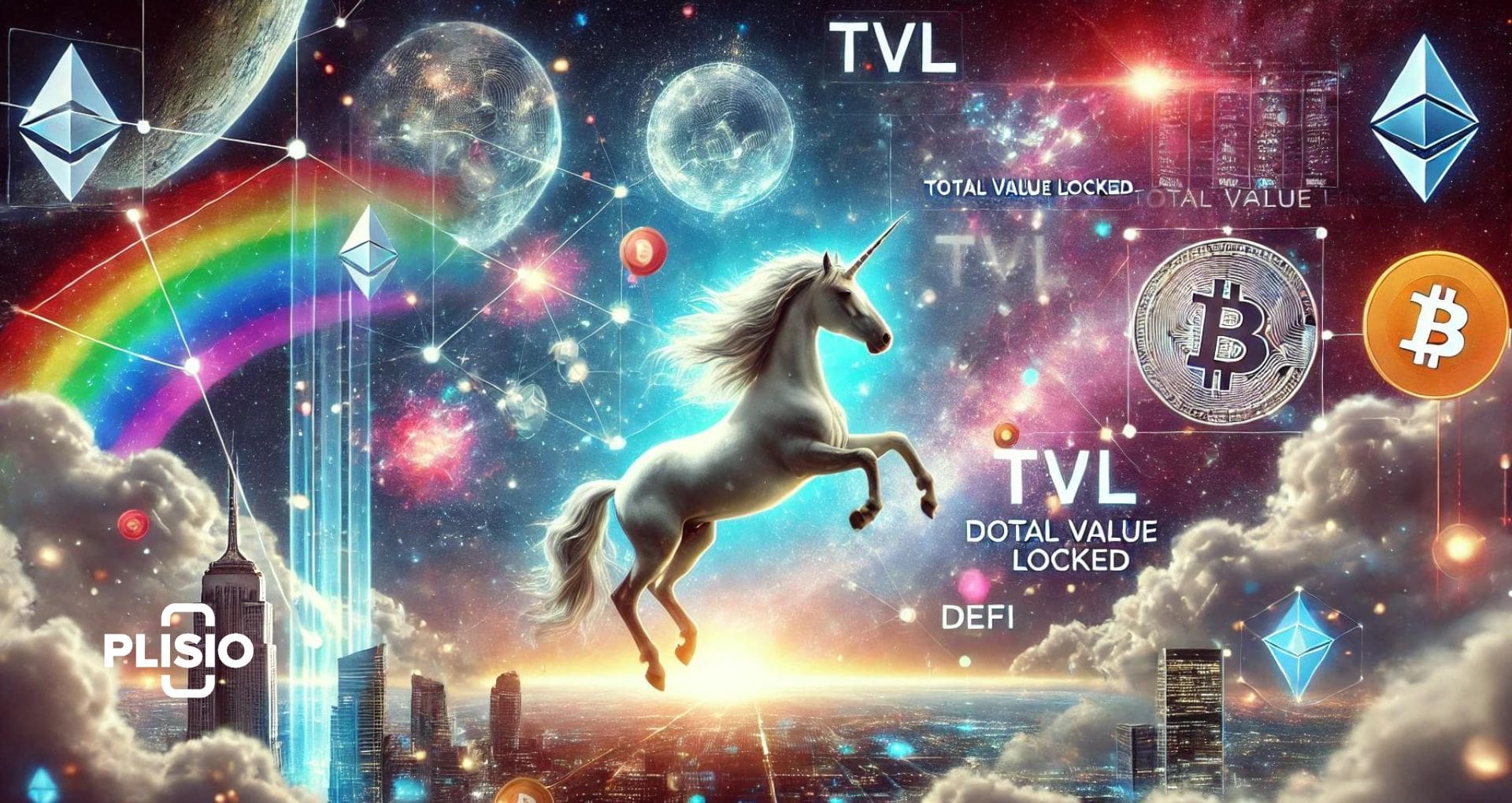The Role of TVL in DeFi: Why It`s a Key Metric

In recent years, crypto investments have delivered impressive returns for many investors. However, despite these high returns, the crypto market faces several performance limitations. When assessing the viability of a crypto asset, Total Value Locked (TVL) stands out as one of the most reliable performance metrics. TVL is a crucial indicator that can help investors determine an asset's potential. Specifically, TVL measures the total amount of assets committed to the DeFi (Decentralized Finance) platforms.
Currently, the DeFi sector is valued at approximately $126 billion, with the top 125 applications alone accounting for $80 billion of this TVL. This concentration highlights the importance of these top players in the overall health and growth of the DeFi market. For newcomers, it is essential to conduct a thorough fundamental analysis of any cryptocurrency before investing. Including TVL in this analysis provides a deeper insight into the asset's stability and potential for growth. So, let's dive into the fundamentals of TVL and explore how it can guide your investment decisions in the dynamic world of cryptocurrency.
What is Total Value Locked?
Total Value Locked (TVL) is a critical measure that captures the total monetary value deposited within a smart contract application, usually reflected in USD or cryptocurrency. This metric quantifies the amount of cryptocurrency that users have staked or locked across various DeFi platforms. TVL is not only an indicator of the total worth of assets utilized as collateral, liquidity provided for trading, and funds active in different DeFi protocols but also serves as a gauge for a platform's attractiveness and user engagement.
TVL plays an essential role in signaling a platform's success and user adoption rates. A higher TVL indicates greater user trust and confidence, reflecting the platform's capacity to attract substantial liquidity and assets for operations such as staking, lending, and borrowing.
Moreover, TVL encompasses the cumulative value of all assets and projects under a particular platform, like Uniswap and MakerDAO on the Ethereum blockchain. In essence, TVL represents the combined market worth of these projects and investments, defining the overall value of a blockchain network. While typically calculated in USD, TVL can be translated into other fiat currencies as well. By addressing the issues seen in centralized finance, DeFi protocols enhance the blockchain's utility, and TVL reflects the real-time aggregated value of these endeavors, excluding any outstanding loans and yields.
How is TVL Calculated?
Total Value Locked (TVL) in DeFi is calculated by summing up the current value of all assets deposited within a platform at any given moment. These assets typically include stablecoins and other cryptocurrencies that are actively utilized in various operations on the platform, such as staking, lending, and liquidity provisioning.
TVL is a dynamic figure that changes continuously, reflecting real-time updates as users deposit and withdraw their assets. This real-time adjustment ensures that the TVL always represents the most current valuation of assets under a platform’s control.
For those interested in tracking the latest TVL figures, a variety of DeFi analytics tools are available. Platforms like Token Terminal and DeFiLama offer detailed insights by monitoring blockchain activities, enabling them to calculate and display up-to-the-minute TVL values. These tools provide a comprehensive view of a platform's financial health and activity, making them invaluable for investors looking to make informed decisions in the volatile crypto market.
Why is Total Value Locked (TVL) Important for DeFi?
Total Value Locked (TVL) is a pivotal metric in the DeFi ecosystem, representing the overall trust and liquidity within DeFi platforms. A rising TVL indicates growing investor confidence in DeFi protocols and suggests strong potential for returns due to increased liquidity. This liquidity is crucial as it supports more investments and enhances the operations of DeFi services.
TVL is not only a measure of liquidity but also a critical indicator for evaluating the financial health of DeFi projects. It helps investors determine whether an asset is undervalued or overvalued by comparing the asset’s market cap with its TVL. A TVL ratio below one often signals that a project is undervalued, while a lower TVL might indicate insufficient funds, suggesting the need for more investment to sustain the project.
Furthermore, TVL affects the functionality of DeFi platforms. High TVL increases the capital available for essential operations such as borrowing and lending, thus promoting a robust lending environment. Conversely, a low TVL can lead to diminished returns and reduced trust among users.
TVL also acts as a trust indicator, reflecting the security and reliability perceived by users. Although a high TVL can sometimes be misleading—if it is primarily driven by a few large deposits—it should be evaluated alongside other metrics like user activity and the number of participants to get a clearer picture of a platform’s credibility.
In addition, TVL is indicative of a protocol’s growth and the DeFi sector's overall dynamism. An upward trend in TVL signifies expanding user engagement and a strengthening network effect, which, in turn, attracts more participants and fosters protocol growth. High TVL not only draws more traditional investors and institutions, thereby enhancing the legitimacy and mainstream acceptance of DeFi, but it also serves as a risk assessment tool. A higher TVL suggests that a protocol is safer, having garnered substantial trust and capital investment, whereas a lower TVL might indicate a newer or less tested platform, posing greater risks.
In essence, TVL is a multifaceted metric crucial for assessing the viability, growth, and risk of DeFi platforms, and it directly influences the strategic decisions of investors and platform managers alike.
TVL vs. Market Cap: What’s the Difference?
TVL (Total Value Locked) and market capitalization are two critical metrics used to gauge the success and viability of cryptocurrency projects, each serving different evaluative purposes.
Market capitalization measures the total market value of a cryptocurrency's circulating supply. It is calculated by multiplying the number of tokens in circulation by the current price of each token. A higher market cap typically indicates a cryptocurrency that is more valuable and established in the market. This metric is particularly useful for assessing a cryptocurrency's size relative to others and its overall market dominance.
In contrast, TVL assesses the real-time adoption of a protocol within the DeFi ecosystem. It reflects the total amount of assets that are currently deposited in a DeFi protocol's smart contracts and is indicative of how well the protocol is fulfilling its intended purpose. A high TVL suggests strong trust and interest from the community, indicating that many users are utilizing the protocol’s services for activities like staking, lending, or trading.
- Protocol Analysis: Use TVL to understand the current usage and effectiveness of a DeFi protocol in attracting and retaining liquidity. It's a valuable metric for gauging how actively the community engages with the protocol's offerings.
- Investment Evaluation: Market cap is often preferred for evaluating the investment performance of a cryptocurrency. It helps investors understand how a crypto asset is valued in comparison to its peers and the broader market.
Both TVL and market cap are susceptible to fluctuations driven by market sentiments and can be influenced by broader economic conditions. Therefore, they should not be viewed in isolation. Investors are advised to look at these metrics in conjunction with other factors such as transaction volume, user growth, and external market conditions to make well-rounded investment decisions.
Both TVL and market cap provide valuable insights but cater to different aspects of cryptocurrency evaluation. Whether assessing a token's market position or a protocol's functional success, investors should use these metrics wisely and always conduct comprehensive research before making any investment commitments in the volatile crypto market.
Which Crypto has the Highest TVL?
The TVL across DeFi projects experienced a robust 19% increase in a short period. Major protocols such as MakerDAO, AAVE, and Curve led this surge. Notably, Curve accounted for approximately 9.7% of the market share, amassing $17 billion in TVL. During this period, a significant influx of investments flowed into DeFi projects as investors looked for alternatives to centralized finance. Following significant developments in blockchain technology, Lido Finance, with its innovative liquid staking solutions that remove the traditional 32 ETH barrier for staking, surpassed MakerDAO with a TVL of $5.9 billion.
Ethereum's Dominance in DeFi TVL
Ethereum continues to hold the largest network by DeFi TVL, maintaining a commanding $73 billion. Its leading position is bolstered by contributions from prominent projects like Curve, InstadApp, and AAVE, which have experienced substantial growth; Curve increased by 22%, Lido Finance by 45%, and Uniswap by 24%. This significant growth in liquidity highlights Ethereum's critical role in the DeFi sector, enhancing its TVL and cementing its status as a key player in the blockchain technology arena.




